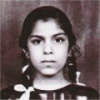 | Name: Bena
Overview: Bena was born in the Kigezi District of Uganda, the daughter of a wealthy businessman. She was diagnosed when nearly 12 and then shunned by children who thought diabetes was contagious. She lived on chapattis and spinach and a bitter vegetable juice thought to cure diabetes. When Idi Amin expelled Ugandan Asians in 1972, her family came to England, and she was delighted to be allowed to eat a wider range of food. She eventually married an Englishman and had two daughters. She works as an office administrator, in a social services department that supports disabled children.
There are also interviews with Bena`s daughter, Emma and her husband, Terry.
Hits=2 |
|
| 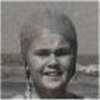 | Name: Victoria
Overview: Victoria`s father was a bank manager and she attended a private school and a grammar school. At 16, she developed an eating disorder after a boyfriend dropped her because she was diabetic, and at 25 she briefly rebelled against her diabetic diet. Otherwise, she feels diabetes has caused few problems and hasn`t prevented her from achieving her ambition of becoming a teacher. She thinks perhaps it did influence her not to have children, but she enjoys life with her partner, and is grateful for new blood testing equipment and other developments which have given diabetics greater freedom.
Hits=2 |
|
| 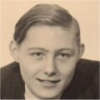 | Name: Patrick Grogan
Overview: Patrick Grogan was treated at King`s College Hospital by R.D. Lawrence (co-founder of the British Diabetes Association, now Diabetes UK) and he remembers Lawrence commenting on the amount of carbohydrate at a hospital Christmas party. He has always kept to a healthy diet, has had lots of exercise as a machine-tool fitter and maintenance worker, and has had no diabetic complications. He`s a member of NHS Concern and the West Midlands Pensioners Convention and says that taking an interest in improving society is what keeps him going.
Hits=2 |
|
| 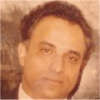 | Name: David
Overview: David`s father was a Fijian doctor whose work took him all round the Fiji islands. David himself managed a small post office before coming to England in 1959. His wife and baby son joined him later and they had six more children. He had converted from Methodism to his wife`s Catholicism and his children attended Catholic schools in Birmingham. He worked long hours to support them, as a telecommunications engineer, until he retired at the age of 60. He used to dream of returning to Fiji but now feels he couldn`t leave his children and grandchildren.
Hits=1 |
|
|
 | Name: Edward Walsh
Overview: Edward Walsh was the son of a village baker. He left school at 15 and trained as an electromechanical engineer. He always had a weight problem but played a lot of sport and felt he had a sensible diet, so was disappointed and upset when he was diagnosed at the age of 50. He controlled his diabetes with diet only, then tablets, then insulin from 2000 but had a remarkable period of 3 months in 2002 when he was able to give up insulin altogether, while working on a contract in French Guyana.
Hits=1 |
|
|  | Name: Colin Gates
Overview: Colin Gates` father and 6 uncles were all butchers and Colin did a meat apprenticeship between leaving school and doing National Service. He worked as a butcher for 17 years then moved into security work; it was during a company health check that his diabetes was discovered. He later became an operating theatre orderly and won an award for his work before a stroke led to early retirement. He regards a subsequent quadruple heart bypass as `the best thing I have ever had done` and refuses to allow other health problems to stop his enjoyment of life.
Hits=1 |
|
|
 | Name: Simon Lawson
Overview: Simon Lawson`s father was 65 when he was born and his mother 44, and both died while he was in his teens. His unhappiness affected his public school education and he failed to get a place at Cambridge. Instead he worked at Sotheby`s in London and it was only after he married in 1971 that he obtained a degree and a doctorate – leading to his present work as an Oxford University librarian. He has warm memories of being treated by two eminent consultants – RD Lawrence and John Nabarro – and has always enjoyed knowing as much as possible about diabetes.
Hits=1 |
|
| 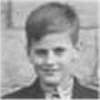 | Name: Peter
Overview: Peter`s father was a professor and both parents were well-informed about diabetes after his older brother was diagnosed in 1945. They spotted Peter`s symptoms early and at first he only needed four units of Lente insulin to last 24 hours. He was educated at Oxford and worked in the steel industry for several years. He is now a management consultant and has few problems associated with diabetes. He has recently remarried, after being widowed in 2003, and has a daughter with diabetes who is `much more able to cope with disturbances to her daily routine than I am`.
Hits=1 |
|
|
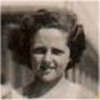 | Name: Ann
Overview: Ann came to England in 1945, and was diagnosed when the matron at her boarding school found her drinking the bath water. Her mother had worked as a nurse at Kings Hospital, London, and took her daughter there, to be treated by R.D. Lawrence (co-founder of the British Diabetes Association, now Diabetes UK). She has memories of being made to go into a hypo, of glass syringes, thick needles, and embarrassing urine tests. She worked as an occupational therapist, and brought up two children alone. Despite eyesight problems, she now makes a living as an artist.
Hits=1 |
|
|  | Name: John Browning
Overview: John Browning`s father was an army officer and John always assumed that he would make his own career in the forces. He was diagnosed with diabetes at the age of 28, not long after getting married, and was invalided out of the army. He became a Conservative party agent and then a teacher. He still weighs his food and attributes his good health to his strict regime. He thinks one of the main improvements in his care has been to see the same specialist at each visit, instead of a different person every time.
Hits=1 |
|
|
 | Name: Shirley
Overview: Shirley left school at 16 and worked for the Inland Revenue until retirement. When she was diagnosed, her mother was very ashamed. Shirley looked after her parents until they died and then lived alone. She has had to cope alone with severe hypos, but says that living alone makes it easier to keep to a strict diet. She feels that her diet has made her healthier than she would have been if she hadn`t had diabetes. She has a low opinion of doctors, apart from a few consultants, but likes the group meetings held nowadays by specialist nurses.
Hits=1 |
|
| 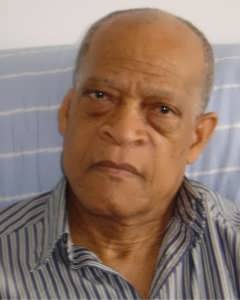 | Name: George Saunders
Overview: George Saunders was brought up in St.Kitts, worked for his father as a tailor, and came to England in 1958. Since recording this interview, he has received a lot of publicity, because his Birmingham workshop, where he worked as a tailor for nearly 30 years, has become part of a National Trust museum. After he was diagnosed, he was on tablets for about a year before changing to insulin. He is full of praise for medical staff, even though he ignores their advice when he thinks he knows best. He feels that his diabetes has caused him few problems.
Hits=1 |
|
|
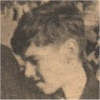 | Name: Fred
Overview: Fred`s family was poor and food was rationed in his early years: he remembers that a Mars bar was cut into slices to last 4 or 5 days! After diagnosis, he was told that `I had to control the diabetes rather than the diabetes control me` and has tried to follow that advice ever since. He lost his sight in 1978 and his second wife left him because she couldn`t cope. He began a successful business making garden furniture and now lives with his third wife, who is also blind.
Hits=1 |
|
|  | Name: Gillian
Overview: Gillian was diagnosed when she was 23, while working as a
journalist in London. At the age of 26, a consultant advised her that if she
wanted children, it would be a good idea to have them soon, because "you`ve
got to consider whether you`re going to see them grow up". Her partner
didn`t want to be a father at that stage, so she decided to be a single
parent and has brought up two children on her own. Her daughter was
diagnosed with diabetes in 1999.
There is also an interview with Gillian`s son, Tom.
Hits=1 |
|
|
 | Name: Leon Cowdery
Overview: When Leon Cowdery left school at 15, his diabetes barred him from his chosen profession of sign-writing because he was not allowed to go up a ladder. He worked as a cycle mechanic and then, in order to avoid going to his parents` Seventh-day Adventist church, he took up floor-laying at weekends. This led him into the building trade and he has been going up ladders ever since! He designed the house in which he lives and, now that he`s semi-retired, he helps his wife with gardening and maintains four motorbikes from the 1950s.
Hits=1 |
|
|  | Name: Lisa McGregor
Overview: Lisa McGregor was diagnosed shortly before starting secondary school. She spent two weeks in hospital, where she learnt to inject herself from the outset. She was given a `traffic light` book, listing forbidden and permitted foods, but didn`t follow the diet strictly. She injected herself twice daily for 20 years until moving to a more flexible regime, with four injections, in 2003. She describes it as a DAFNE regime (Dose Adjustment for Normal Eating), but hasn`t attended a DAFNE training course. She has had few health problems, but several frightening experiences as a result of hypos.
Hits=1 |
|
|
 | Name: Emma
Overview: Emma`s mother, Bena, was diagnosed with diabetes in Uganda in 1965 and came to England when her family was expelled by Idi Amin. She married an Englishman, Terry, and had two children – Emma and her younger sister. When Terry was at work, Emma and her sister had to cope from an early age with their mother becoming unconscious. Her sister has now married and left home, but Emma still lives with her parents and was often phoned at work when her mother passed out – until her mother attended a DAFNE course and gained better control of her diabetes.
There are also interviews with Emma`s mother, Bena, and her father, Terry.
Hits=1 |
|
| 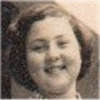 | Name: Amy Yau
Overview: Amy Yau`s mother was a stenographer; her father was a health inspector, and they both came from mixed race backgrounds. Amy was born in Singapore, just before it was invaded by the Japanese, and was saved by the presence in her household of her Japanese grand-mother and great-aunt. She came to England to train as a nurse in 1960 and married a few years later. Her husband originates from mainland China and opened the first Chinese restaurant in Malvern. She helped out in the restaurant while her children were growing up and then returned to nursing.
Hits=1 |
|
|
 | Name: Kushira Hackett
Overview: Kushira Hackett`s mother was white and her father black – from Guyana. Her parents split up when she was 5 and her mother later married a Jamaican. After diagnosis, the hospital staff explained to her mother about portions and gave her scales for weighing food, but gave no explanations to Kushira. Her mother also gave no explanations, and she thinks this led to her rebellion against diabetes, and to her leaving home aged 16. She had a period of homelessness, but later gained a law degree and now lives happily in Birmingham with her partner and two children.
Hits=1 |
|
| 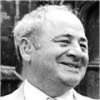 | Name: Colin Dexter
Overview: Colin Dexter was diagnosed in the same year that his Inspector Morse novels began to be shown on TV, after his wife recognised his symptoms and urged him to see his GP. He was admitted to hospital immediately and put on an insulin drip. He sometimes finds it a bother to take all his insulin and blood-testing equipment with him on his travels, but doesn`t otherwise allow diabetes to dominate his life. He continued to be a `very big drinker indeed` until 2004, when he gave up alcohol altogether.
Hits=1 |
|
|
 | Name: Alex Wright
Overview: Dr. Alex Wright was Senior Lecturer and Honorary Consultant at Birmingham from 1973 to 1997, mostly at the General Hospital and latterly at the University Hospital, Selly Oak. He is now Honorary Senior Lecturer and works part-time at Manor Hospital, Walsall and Heartlands Hospital, Birmingham. He has also seen private patients on Saturday mornings for over 25 years. He has published on many aspects of diabetes and was part of the policy advisory group for the UK Prospective Diabetes Study, a 20-year trial which showed that the life-threatening complications of type 2 diabetes can be significantly reduced by appropriate treatment.
Hits=1 |
|
| 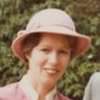 | Name: Mo Linton
Overview: Mo Linton`s husband, Douglas, was born in 1926 and diagnosed with diabetes aged three. He kept his diabetes secret and became a racing driver, ensuring that his urine tests would pass medicals and keeping his blood sugars high during races. Mo met him in early 1967, when he was 40 and she was 22, but didn`t discover he was diabetic until four years later. They lived together from 1973 and married in 1981. She found secrecy difficult and they both relaxed when everyone learnt he had diabetes after a newspaper reported his opening of a new diabetes centre in 1998.
Hits=1 |
|
|
 | Name: Margaret Elliott
Overview: Margaret Elliott`s newly-qualified local doctor diagnosed diabetes as soon as he walked through her front door - from the smell of acetone. Her family was poor but managed to pay for some medical care through a thrift club. Her parents did her injections for her and her husband did them after she married at 20. She was advised not to have children, but had 3 normal births and one caesarean. She attributes her good health to her husband`s care and a very strict diet. She has smoked 6 or 7 cigarettes a day since she was 14.
Hits=1 |
|
|
| Search returned 26 matches |